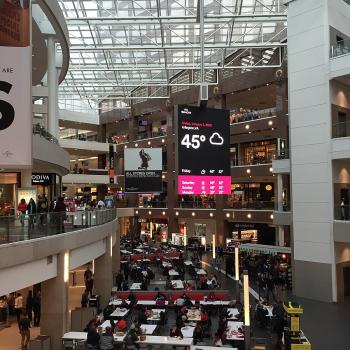“Photos of 1960s US Prison System Attempt to Show that Inmates Are Us”:
Lyon’s images are an echo of an earlier time, a time when uniforms were white and Dr. Martin Luther King, Jr. was doing time. But the photos also serve as a dark omen, of a prison-industrial complex that would only grow more hungry, more unjust, more powerful. “The prison changed me a lot, and not in the way I could have predicted,” Lyon said. “There is an expression about dope, ‘Once the needle goes in, it never comes out.’ I never really shook the Texas Prison off.”
more–these are just great photographs
Dara Lind on “ban the box”:
It’s something advocates have been asking Obama to do for a long time, and a concrete step toward not just reversing mass incarceration in the future, but also making sure its past victims don’t slip through the cracks. But it’s also a reminder that fixing discrimination is rarely simple — and that the people who are most victimized by a problem might not be the ones most helped by a solution.
more–surprised this doesn’t mention employer fears around liability, even if only to assuage them. Anyway, see Lind also re: reducing Draconian sentencing can increase racial inequality.
More Lind–Lind is sort of our theme this week, along with the usual theme that humans interpret solutions as damage and route around them:
De Blasio is far from the first politician to find himself in this trap. The promise of “smart on crime”-style criminal justice reform is to reduce incarceration while reducing crime. But too often, that means that when crime actually happens, reformers react the same way their tough-on-crime predecessors did: by keeping more people locked up.
Policy is about trade-offs, and crime policy isn’t any different. But policymakers still see it as an unacceptable failure of criminal justice policy if someone who has been in contact with the justice system and is released goes on to commit another crime. That prevents any genuine discussion of costs and benefits — and it leads, inexorably, to mass incarceration.
Follow Dara Lind on the twitter.
“Many Police Departments Have Dismal Body-Camera Laws”:
Since last fall, outfitting every cop on the streets with a body camera has moved from a fringe issue to de facto national policy. The federal government has provided $23 million in funding for the technology; cities have flocked to buy devices for their departments. Cameras are the country’s single most unified reply to accusations of police abuse and systemic racism.
But according to a new report from an umbrella organization of major national civil-rights groups, the city laws that govern body cameras—in other words, the very thing that will determine how body cameras work in the field—are deeply, sometimes fundamentally, inadequate. Many of the nation’s largest police departments do not address important aspects of body-camera use or have policies directly contrary to those that civil-rights organizations believe to be necessary.
And speaking of solutions, schools are reducing suspension rates through in-school isolation, punitive “alternative schools,” and paddling:
…In January 2014, the Obama administration issued new federal guidelines under which schools must reduce their reliance on out-of-school suspensions and expulsions. The Department of Education’s Office for Civil Rights has since been investigating school districts across the country that use suspensions to unfairly “push out” students of color and students with disabilities.
Mississippi, which suspends a higher ratio of black to white students than any other Southern state, has received the message loud and clear.
In the southeast part of the state, schools in the town of Meridian—which were investigated by the Department of Justice for routinely suspending, arresting, and sending students to jail for minor in-school infractions like using profanity, flatulence, and “disrespect”—have been ordered by their superintendent to stop calling the police unless a student commits a felony.
Toni Kersh, director of school attendance for the state’s Department of Education, says, “We’re encouraging schools to start handling discipline in-house.”
That in-house discipline includes policing the hallways, having students walk through metal detectors daily, patting them down, relying even more heavily on corporal punishment and in-school detention, sending more students to alternative schools, and surveilling them with cameras. The Tupelo Public School District, in eastern Mississippi, for instance, recently promised the Office for Civil Rights that it would “ensure to the maximum extent possible that misbehavior is addressed in a manner that does not require removal from school.” In June, the school board authorized security guards to start carrying pepper spray in classrooms and hallways.
National experts on school discipline point out that these measures are not unique to the South. “You see it at charter schools a lot,” says Kathleen Nolan, a professor of teacher preparation at Princeton University and an expert on zero-tolerance policies in schools. “Straight from the model of order-maintenance policing—dress code, silence, walk in straight lines, metal detectors—except now it’s in the schools and being done by teachers with less training in this than the actual police have.”
more (I maybe should say I don’t have an opinion on corporal punishment. But the overall “get your suspension numbers down while changing nothing about our overall preference for punishment and domination over reconciliation” attitude is, no pun intended, striking. This is a good, nuanced article that suggests many teachers would want to foster reconciliation, taking the time and getting the training needed to teach empathy and self-control, but they’re flat-out overwhelmed and left without financial or union support.)











